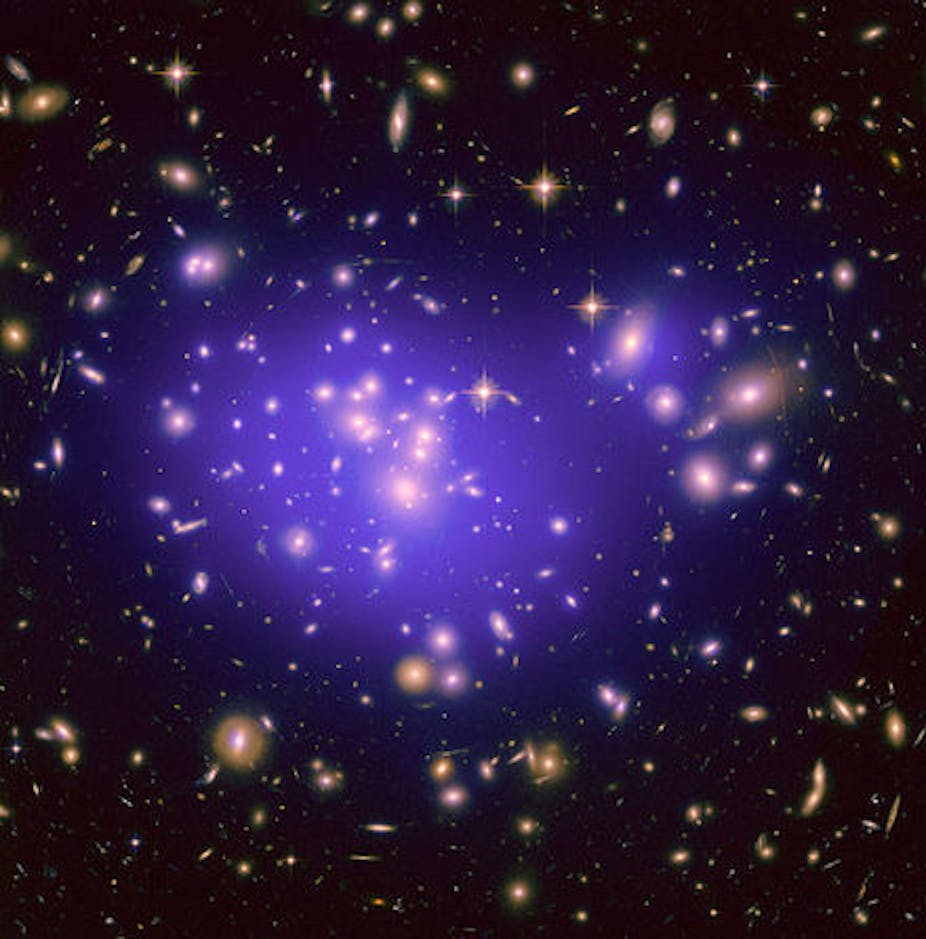Dark matter has worked its way back into the news in the last few days with the completion of a detection experiment in a tunnel deep under the Italian Alps.
Researchers from Columbia University used a vat of liquid xenon in an attempt to detect dark matter particles as they passed (virtually undetected) through the earth.
The experiment recorded a couple of blips, but nothing significant enough to confirm the existence of dark matter.
Remind me, what’s dark matter?
Simply put, dark matter is gravitating material that holds galaxies together.
Ordinary matter, such as the material that composes the earth and everything on it, has insufficient total mass to keep stars such as the sun rotating every 100 million years around the centre of our galaxy.
This was discovered in the 1970s by adding up the amount of starlight emanating from individual spiral galaxies and then estimating how much mass is responsible for that starlight.
From these observations we can determine that the amount of mass found in these galaxies is insufficient to cause them to rotate at the rate that they do.
The further from the centre of the galaxy one performs this comparison the worse the discrepancy becomes, until it becomes a factor of ten discrepancy at the very edges of galaxies.
In order to solve the problem, astronomers proposed the existence of some theoretical matter that would account for the discrepancy. This dark matter is invisible to the naked eye but has enough mass to account for the way galaxies rotate.
According to NASA satellite measurements, dark matter makes up 23% of the universe.
Is there a consensus?
While the majority of today’s astronomers subscribe to this dark matter theory, there is ongoing criticism from others within the field.
One of the most sustained attacks against dark matter has come from the Modified Newtonian Dynamics (MOND) camp.
MOND is a modification of Isaac Newton’s fundamental law of gravitational attraction and was first proposed by Mordehai Milgrom in 1983 as an alternative solution to the galaxy rotation problem.
According to Newton’s law, the further an object is from the centre of a galaxy, the slower it should rotate. Unfortunately for Newton, galaxies appear to rotate with a uniform velocity.
To fix this problem, Milgrom proposed the existence of MOND.
A recent paper by Stacy McGaugh of the University of Maryland claims that MOND provides the best explanation for the relationship between the mass of a galaxy and the rate at which they rotate.
Unfortunately for McGaugh, dark matter theory can explain these galaxies’ behaviour equally well and MOND isn’t really required.
What’s dark matter made of?
The truth is, we aren’t entirely sure.
Perhaps it is a particle beyond the protons, neutrons and electrons that make up the physicists’ Standard Model? If that’s the case then experiments currently being conducted at the Large Hadron Collider in Switzerland may help in this quest.
Another potential dark matter candidate is the mysterious, and largely elusive neutrino.
Unfortunately, when cosmologists create simulations of universes that start with the Big Bang, neutrino-dominated universes emerge with structures unfamiliar to what we currently observe.
Perhaps the next step is to create a better map of the dark matter in the universe. The collaborative ARC Centre of Excellence for All Sky Astrophysics has a program to do just this.
Indeed, many scientists around the world feel they’re getting closer to unlocking the secrets of dark matter, which lends the search ever more momentum and urgency.

